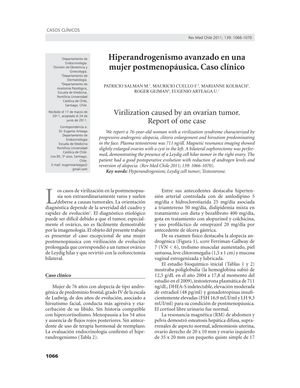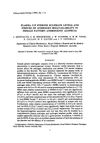Advanced Hyperandrogenism in a Postmenopausal Woman: Case Report
August 2011
in “
Revista Medica De Chile
”

TLDR A postmenopausal woman's high testosterone levels and symptoms improved after removing a tumor from her ovary.
In 2011, a 76-year-old postmenopausal woman was diagnosed with advanced hyperandrogenism caused by a Leydig cell tumor in her ovary. She had high testosterone levels of 711 ng/dl and symptoms such as androgenic alopecia, clitoromegaly, and hirsutism. Imaging showed enlarged ovaries and a cyst. After a bilateral oophorectomy, which confirmed the tumor's presence, her androgen levels decreased, and her alopecia significantly improved. This case underscores the need to consider ovarian tumors in postmenopausal women with hyperandrogenism, as oophorectomy can be an effective treatment.
